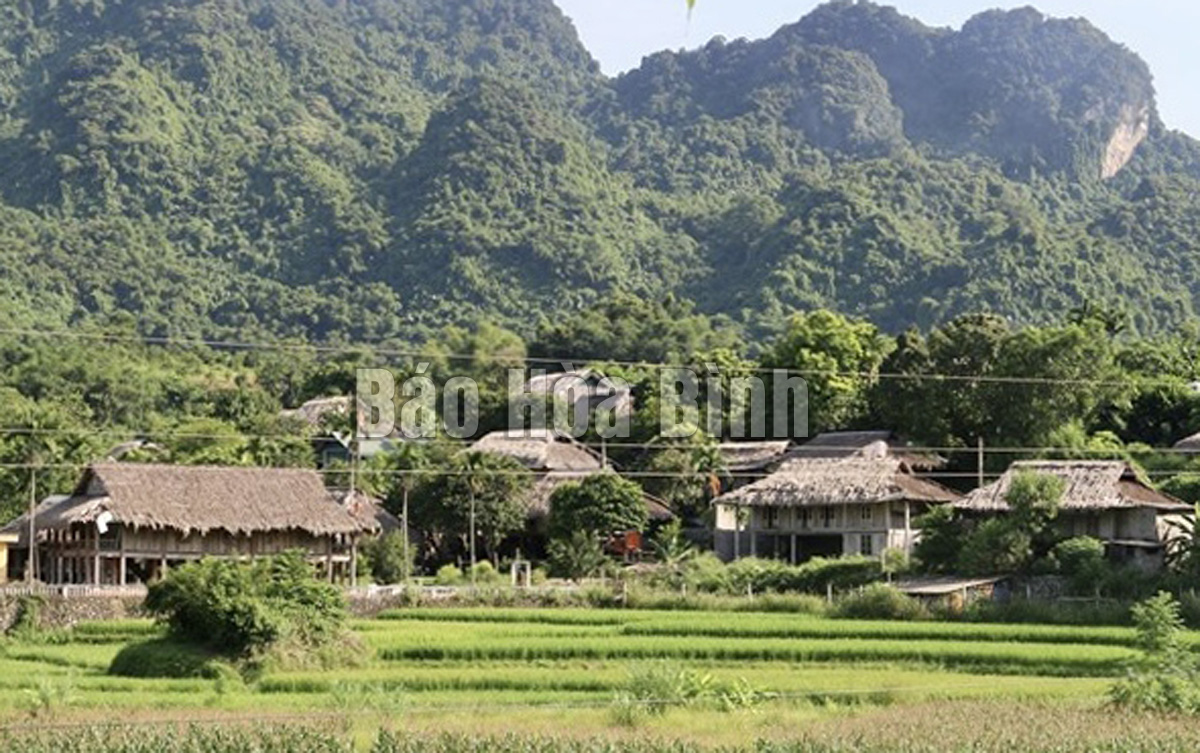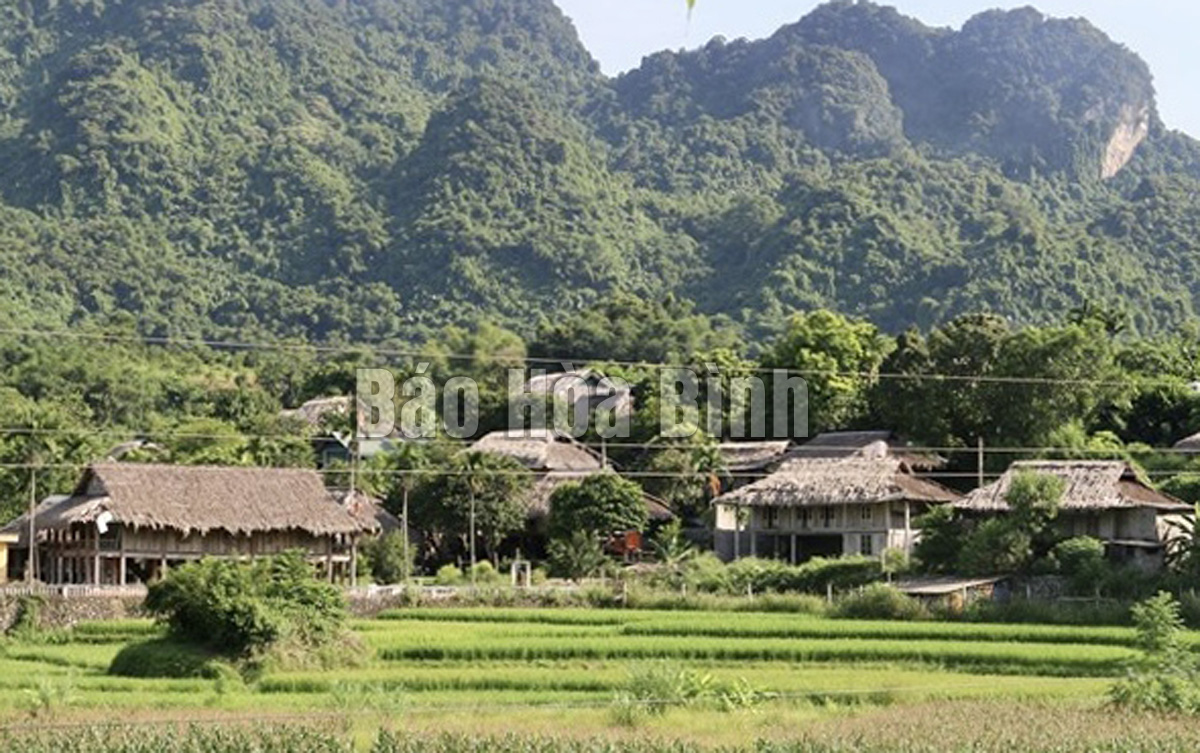
(HBO) – As part of the four well-known Muong regions, ethnic people in Cao Phong district take pride in their Muong Thang cultural identity.

A community-based tourism
site in Mo village, Binh Thanh commune (Cao Phong district) attracts visitors
with traditional cultural values.
Ancient Muong stilt houses in Mo
village of Binh Thanh commune hold an appeal to tourists, especially
foreigners. The destination promises enjoyable experience in the life of local
people, traditional customs, festivals and production activities. Ancient
architectural traits remain intact in stilt houses located in Thach Yen, Hop
Phong, Tien and Thung Nai communes.
Muong Thang hosts various annual
traditional festivals, namely a festival to open Bo shrine in Thung Nai commune
and one in Khanh pagoda in Thach Yen commune. Of note, it has revived the Khai
mua (season start) Muong Thang festival in Dung Phong commune since 2018.
At some points in the past,
traditional cultural traits faced the risk of falling into oblivion. Local
officials and people over the years have made efforts in cultural conservation
and development. The district has conserved about 1,600 Muong gongs, including
400 ancient ones.
Via communication activities, all
residents have now engaged in cultural conservation work. The district opened
classes teaching Muong folk songs and gong performance for the youths. The Mo
Muong Thang club was recently launched with the participation of 35 artisans
and people who love of the art.
Pham Ngoc Nhat, head of the
culture-information office of the district, said cultural conservation and
development contribute to tourism development and promoting the image of
friendly Muong Thang people.
The district is actively calling
on people to maintain and uphold cultural characteristics in tandem with
tourism development in a bid to improve local living conditions, and offering
training on tourism and access to capital in building community-based tourism
development./.
A diverse chain of eco-tourism and resort destinations concentrated in Hoa Binh city and the districts of Tan Lac, Da Bac, and Luong Son… Along with the launch of several key high-quality resort tourism projects, these developments have reshaped the landscape and enhanced the appeal of Hoa Binh as a travel destination.
Boasting diverse terrain, a mild climate, and rich natural resources, Cao Phong district is increasingly asserting its place on Vietnam’s tourism map, attracting both domestic and foreign visitors. The district is renowned for its stunning landscapes, majestic mountains, a crystal-clear hydropower lake, and the unique cultural identity of local ethnic groups.
With its pristine landscapes, unique cultural heritage of Muong ethnic minority, and an expanding range of visitor experiences, Tan Lac district of Hoa Binh has fast become a captivating destination for both domestic and international tourists.
Until now, Sung village in Cao Son commune, Da Bac district remains the only Dao ethnic community in Hoa Binh province to develop a community-based tourism model. Beyond its untouched natural landscapes, cultural identity serves as the cornerstone attraction for visitors.
Alongside the diverse cultural identities of the Kinh, Muong, Tay, Thai, Dao, and Mong ethnic people, Hoa Binh province is also renowned as the "capital" of the northwestern Vietnamese cuisine, offering unique and distinctive dishes. At festivals, during Lunar New Year (Tet), or on significant family or community occasions, special dishes are prepared, leaving a lasting impression on visitors.
A Phong Linh (Yellow Tabebuia) flower garden in Thang village, Thach Yen commune, Cao Phong district is currently in full bloom, drawing a large number of visitors.



